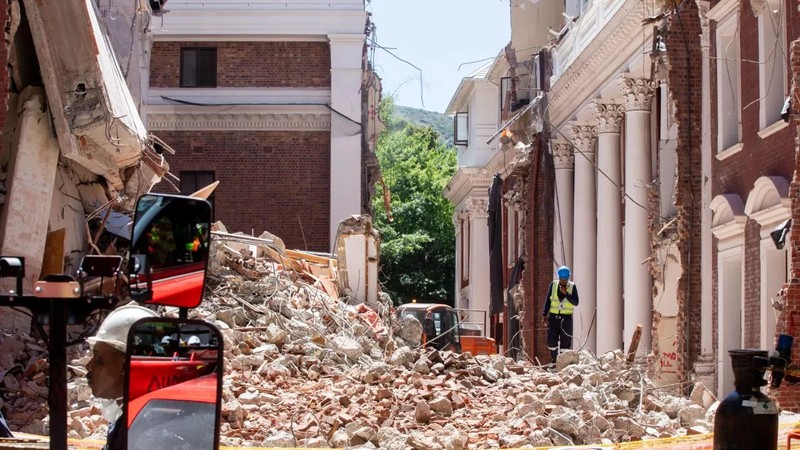Three years after a blaze ripped through Parliament’s National Assembly and Old Assembly, Parliament members (MPs) received an update on the progress of the long-awaited restoration of the severely damaged buildings.
MPs conducted a walkabout tour of the construction site on 5 November.
The Development Bank of Southern Africa (DBSA), which has been tasked with overseeing the restoration, provided members of the Joint Standing Committee on Financial Management of Parliament with a comprehensive overview of the status of the project, which includes the reconstruction of the National Assembly and Old Assembly buildings and the refurbishment of 90 Plein Street offices.
The committee said the visible progress on site and commended the DBSA, which is the implementing partner, for what Members of the committee described as an informative and inspiring presentation and walkabout.
Special project manager Simon Mashigo revealed during a briefing that the completion date of the National Assembly is expected to be in November 2026, while the Old Assembly is expected to be completed in December 2026 (with practical completion – when the building is ready for its intended use – set for February 2027).
The committee was informed that the project is on track, with clear baselines, sustainable design principles and a strong socio-economic impact.
The DBSA told MPs to expect to occupy a modern, climate-resilient and technologically integrated precinct by the end of November 2026.

Some members were concerned about what they called inconsistencies in the reported completion dates, as both December and November 2026 are cited.
Members also pressed for more clarity on costs.
The committee noted that the overall cost of the reconstruction has increased from R2.2 billion, as recorded in 2024, to a current budget of R4.6 billion.
Mashigo said that they have broken the reconstruction and rebuilding project into five main work packages, with the rebuilding and upgrade of the National Assembly itself having three packages.
“When we talk about the budget of R4.6bn, it is not R.46bn in terms of the National Assembly. We have received a number of inquiries from the media on how the National Assembly can cost R4.6bn? And we said, no, R4.6bn is the (infrastructure) programme.”


Mashigo assured the committee that no cost overruns have been recorded, and all contracts remain within the approved budgetary parameters.
He said that progress on the structural works of the National Assembly is now at 45% complete, with overall physical construction progress sitting at 6% (excluding demolition work done in previous years).
The construction amount for the National Assembly is expected to be R2.27bn, while the amount for the Old Assembly is expected to be R1.3bn.
As of September, R1,036,742,314 has been spent, with the remaining budget being R3,346,789,425.
While recognising that the total budget includes work on both the National Assembly and Old Assembly projects as well as refurbishment of offices at 90 Plein Street, the MPs requested a detailed breakdown of how costs are distributed and whether design changes or inflation adjustments account for the variance.
DBSA has shared a breakdown of current costs:

The committee has requested that the DBSA submit a comprehensive schedule, budget breakdown and all necessary approval documents before its next briefing.
The Co-Chairperson of the committee, Sanny Ndhlovu, welcomed the presentation, noting that the project is moving well and is on track.
“As a committee, we welcome the progress and work done and wish them well in their efforts. The committee stands ready to exercise its oversight role to ensure that the reconstruction of Parliament is completed on time, within budget, and to the highest standards of safety, sustainability and accountability,” Ndhlovu said.


